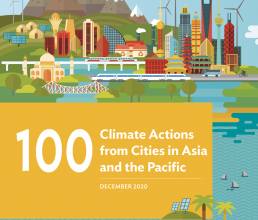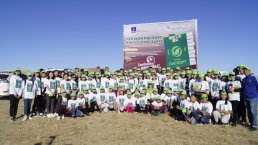First appeared in

Asian Development Bank
100 Climate Actions from Cities in Asia and the Pacific
Inspired by the Sustainable Development Goals (SDGs), the Mongolian Ministry of Environment and Tourism has begun implementing the Green Passport campaign in Ulaanbaatar to increase youth participation in environmental conservation.
Inspired by the Sustainable Development Goals (SDGs), the Mongolian Ministry of Environment and Tourism has begun implementing the Green Passport campaign in Ulaanbaatar to increase youth participation in environmental conservation.
The ‘let’s change our attitude’ program was born from the Mongolian government’s belief that future generations may hold the key to achieving the SDGs by creating sustainable behaviors at a young age. Incentivized by a ‘Green Passport’, children in Ulaanbaatar were encouraged to conduct activities relating to environmental protection.
The project kicked-off in 2018 when 25,000 students and 6,000 teachers were introduced to the green passport idea and were challenged to design a recycling bin for batteries. Following the competition, 300 waste battery bins with the winning design were installed, which collected 14,393 kilograms of batteries. Additional activities were planting 400 trees of over 36 different species, learning about ozone layer and ecosystems, and cleaning up 20 tons of waste.
42K
TONS OF GREENHOUSE GASES SAVED BY 2030
TONS OF GREENHOUSE GASES SAVED BY 2030
Phase two of the campaign involved another 25,000 students living outside the capital. Among the activities was a video competition for information dissemination, a ‘waste marathon’, environmental reporter training, and a flash-mob competition.

The campaign will continue for another two years, aiming to reinforce sustainable habits while involving 30% of all Mongolian high school students (photo by Tuul Kawa).
The Challenge
Ulaanbaatar has experienced rapid growth in recent years, and faces challenges related to air pollution and waste management.
Co-Benefits
Social The project aims to broadly change lifestyle habits among participants and has the potential to result in significant water and energy savings.
Environment The proper disposal of waste batteries will prevent ecological damage and pollution, and the planting of trees will increase biodiversity in the city.

